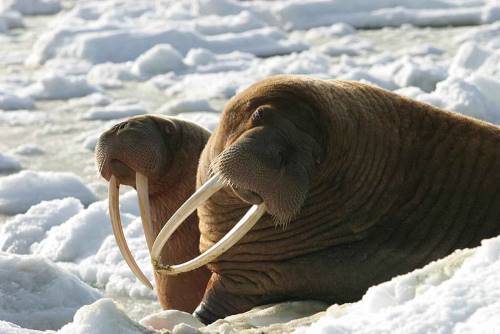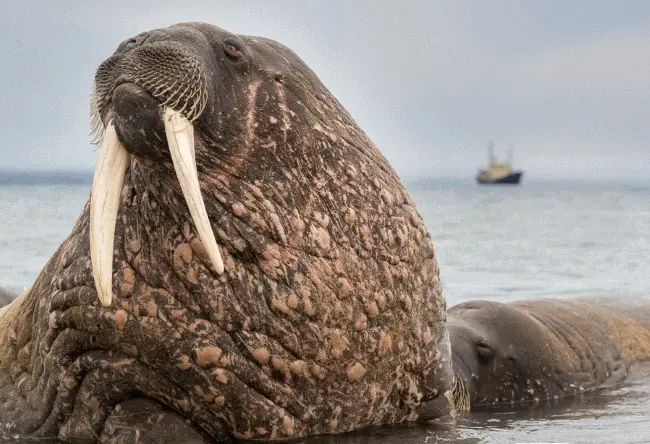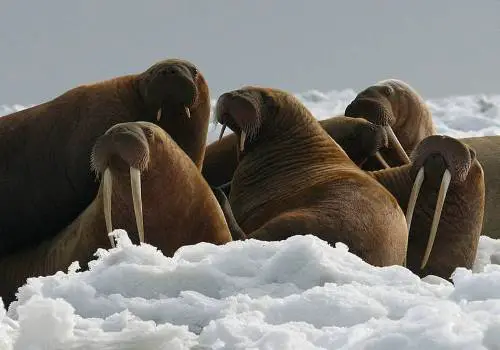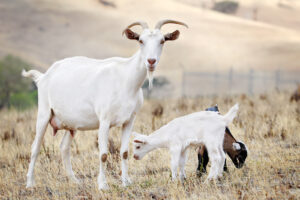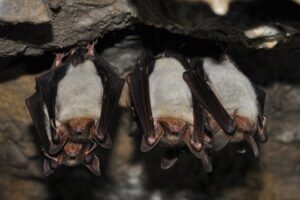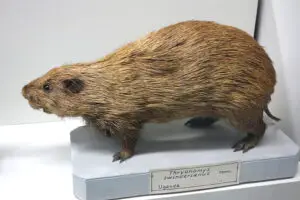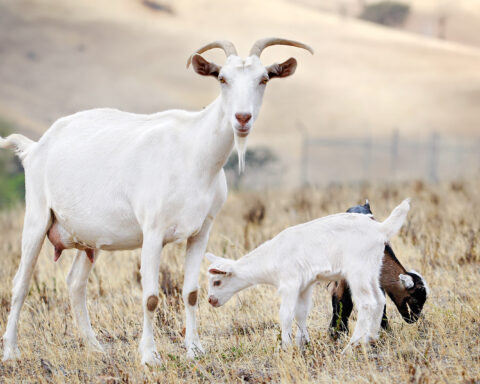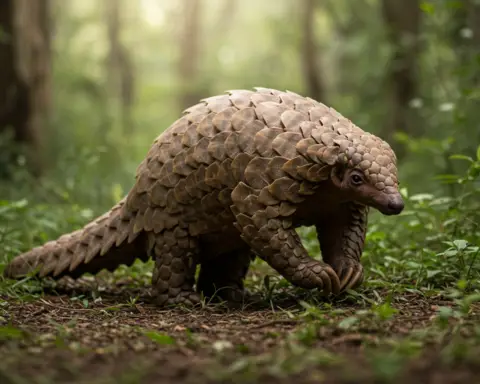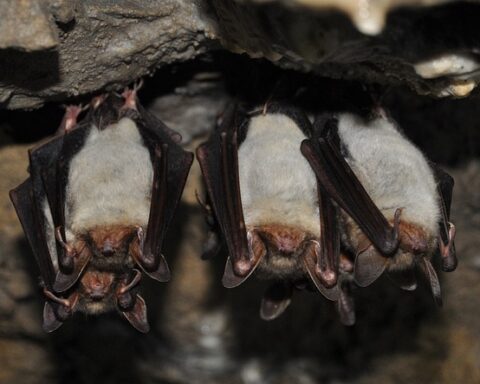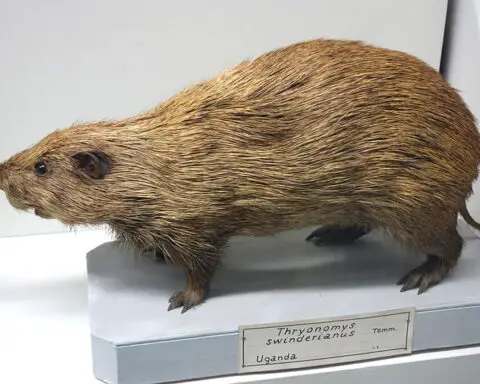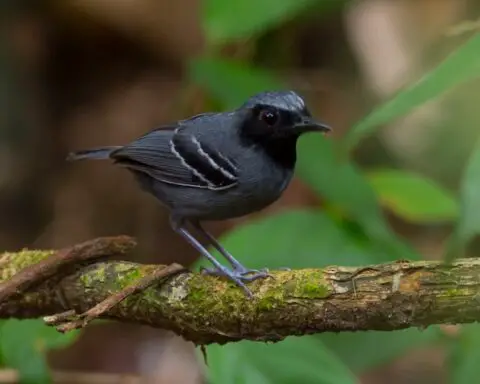Walruses have a circumpolar distribution in that most subspecies inhabit Pacific waters while others are primarily found in the Atlantic seas. Scientists have yet to determine the conservation status of a walrus precisely due to their circumpolar distribution. However they are most likely to be found in Bering and Chukchi Seas as well as in the Atlantic Oceans adjacent to Greenland, Russia, and Scandinavia. Now let us discuss where do walruses live in the wild. You’ll be able to study walrus habitat in detail.
Where Do Walruses Live Map?
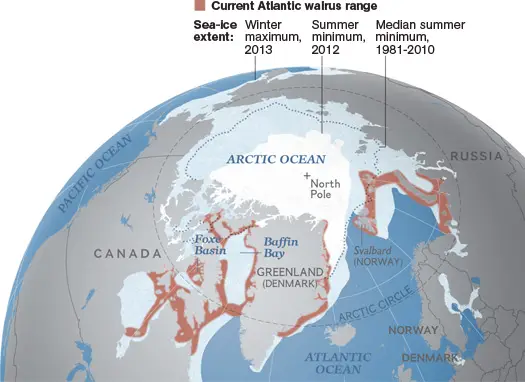
SOURCES: ERIK W. BORN, GREENLAND INSTITUTE OF NATURAL RESOURCES; NATIONAL SNOW AND ICE DATA CENTER; CANADIAN ICE SERVICE, ENVIRONMENT CANADA
Walrus Habitat
Walrus makes habitats in drifting ice floes, shallow marine areas, island beaches, and the open water habitats with massive ice packs such as polynyas. Unlike polar bears or other arctic predators, walruses are not generally opportunistic feeders. They seem to rely only on a few animal species for consumption. That is the reason why walruses do not travel great distances in search of a suitable habitat.
Walrus likely makes home in shallow water habitats with a depth reaching at 328 feet. They will rarely forage in deep waters. When the breeding season occurs, the female walrus takes to the ice floes where it gives birth to its calves.
The female and its newborn calf will probably haul on land because sometimes ice floes become too thin to support the walrus’ weight. However both mother and a calf will remain closer to the ice floes.
Walrus makes habitats in drifting ice floes, shallow marine areas, island beaches, and the open water habitats with massive ice packs such as polynyas.
Just as they don’t prefer to haul on the thin ice, walruses might not fancy living on a hard ice either so that they cannot break it through to catch seals. When the ice reaches the length of 20 cm it becomes unbreakable. Walruses don’t like this.
Outside the breeding season, male and female walruses often relax together in the water off ice floes but they usually do not haul out. Adult males are thought to haul out to boulder beaches that are quite abundant in cobble, rock and sand.
Every year, hundreds of thousands of adult males gather around the Round Island in Bristol Bay (Alaska). In the Northwest Territories and the Coats Island they will possibly breed in a mixed gathering of males and females. During late summer many calves will join the herd.
Over the past many years, the global warming is going to threaten the very survival of walruses. The melting of a walrus’ major habitat—ice floes appear to be a major challenge. Walruses need ice floes not only for feeding or hauling—they give birth to their calves on the ice floes.
Where Do Walruses Live in the World?
Walruses inhabiting Atlantic waters have probably the largest population size—from Canadian Arctic all the way to the Russian Kara Sea. They are close to extinction off the coast of Nova Scotia, Prince Edward Island, Sable Island, and Magdalen Islands. Walruses were quite abundant on these islands a century ago.
The walrus occurring in the Atlantic waters is thought to survive in Chukchi Sea and Bering Sea. They travel as the pack of ice moves. Walruses migrate to the Chukchi Sea in summer whereas in winter they travel to the Bering Sea.
Many walruses are found in the Siberian Sea, Laptev Sea, Wrangel Island, south to Unimak Island, west of Alaskan Peninsula, and the eastern Kara Sea. The females produce calves in between St. Lawrence Islands and Nunivak Islands.
References
Fay, F. H. “Ecology and Biology of the Pacific Walrus, Odobenus rosmarus divergens Illiger.” United States Fish and Wildlife Service, North American Fauna 74 (1982): 1–279.
“Izembek National Wildlife Report Sept 2015” (PDF). USFWS. Retrieved 26 March 2017.
Fay, F.H. (1985). “Odobenus rosmarus”. Mammalian Species. 238 (238): 1–7. doi:10.2307/3503810. JSTOR 3503810.

